The Magical Vortex, created by the Asur ages past, drains the chaotic energies that leak into the world from the malicious and eldritch realms, keeping the daemon hordes at bay. Now, the return of the Twin-Tailed comet has disturbed the fragile wards of the Vortex, inciting those who would take advantage of this weakness into action, to twist the vortex towards their own aims.
For those uninitiated with Total War, the Real Time Strategy series has focused on large scale, open ended campaign play. Players move and manage armies and territories over a campaign map, as they expand territories and engage enemy forces. Armies are built outside of combat and funded by taxes rather than any resource mechanic, and are persistent through battles. Combat itself is large scale, where units of soldiers move in formation, and where facing, flanking, fatigue, morale, and elevation are crucial components to consider. The Total War: Warhammer series is the first the franchise has deviated from historical routes, though that deviation has also allowed the developers to be more ambitious in what they can achieve.

The second of three planned Total War games set in the Warhammer Universe, Total War: Warhammer 2 takes us to a completely new and greater portion of the Warhammer world, embroiled in its own struggle. While Total War: Warhammer 1 focused on the Old World portion of the Warhammer Fantasy world, the sequel focuses on the New World, including a rough fantastical equivalent of North and South America, Africa, and a large ringed island that sits between them. The relative fractured nature of this map keeps many factions separated and isolated from one another, meaning a powerful faction on continent will be unlikely to interact with those on other continents, barring border skirmishes.
A lot also needs to be said about the wonderful visual design of the map, as one explores the lush forests, scorched deserts, blasted wastes, and temperate lands, there’s a fantastic sense of distinct local and exploration. This is, without a doubt, the best looking, and very possibly the largest map in a Total War game so far. One of the main selling points for Total War: Warhammer 2 is that it introduces a campaign which allows for direction and focus other than simple conquest, a first for any main Total War campaign, unlocking a way to win without conquering the world and, conversely, a way to lose without being wiped off the map. In the Vortex Campaign, you are competing with the other three factions to complete five rituals and ultimately wrestle control of the magical Vortex for yourself.
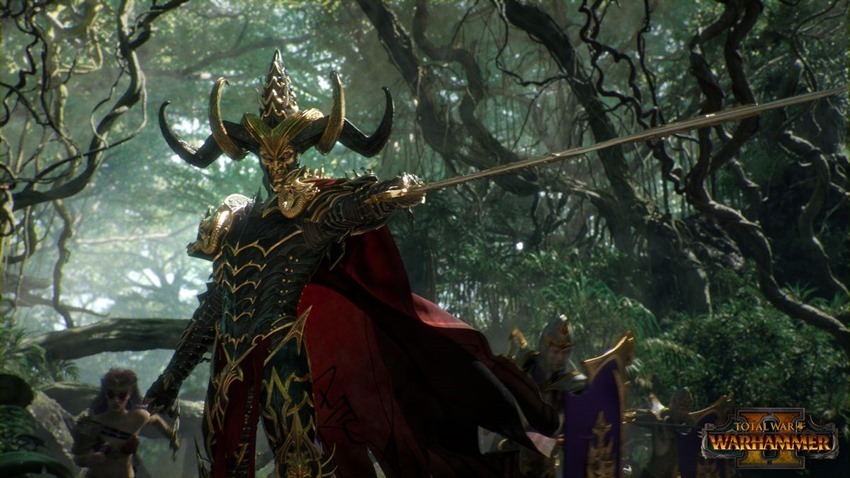
The Vortex isn’t the only path to victory – it can also be achieved by destroying the competing factions, but the topography of the map and the dispersed manner in which the factions are located makes this unlikely. That said, the Vortex rituals isn’t exactly a race. A faction that completes all five rituals doesn’t automatically win, but they’ll gain the ability to compete in one final climactic battle which will see them the victor should they win. One can, if they so choose entirely ignore the rituals, and this is at times preferable when one’s struggling to hold ground and establish borders.
In order to perform a ritual, one needs a certain amount of ritual currency (named differently for each faction). These can be gained through completing tasks and exploration, but there are certain locations that generate this currency passively over time. These areas are, unsurprisingly, hotly contested between the factions that want to deny it from their enemies or claim it for themselves.
When initiated, Rituals take several turns to fully complete. During this time the player needs to defend three of their cities, two of which are randomly determined, for the duration of the ritual, and if any fall the ritual fails and needs to be restarted. To make matters more challenging, as soon as a faction initiates a ritual, a collection of hostile Chaos armies will spawn, marching towards the closest ritual site with the intention of destroying it. To further complicate matters, factions can hire a temporary intervention force, a separate army that spawns near one of the ritual sites, to hinder allies performing a ritual.
This means that preparation is often as important as the ritual itself, particularly when one doesn’t know where the hostile armies will appear, and the quantity of enemy forces that appear grows with every ritual one completes. The final ritual is a mad, chaotic string of battles as one is overwhelmed by enemy forces looking to destroy everything near them.
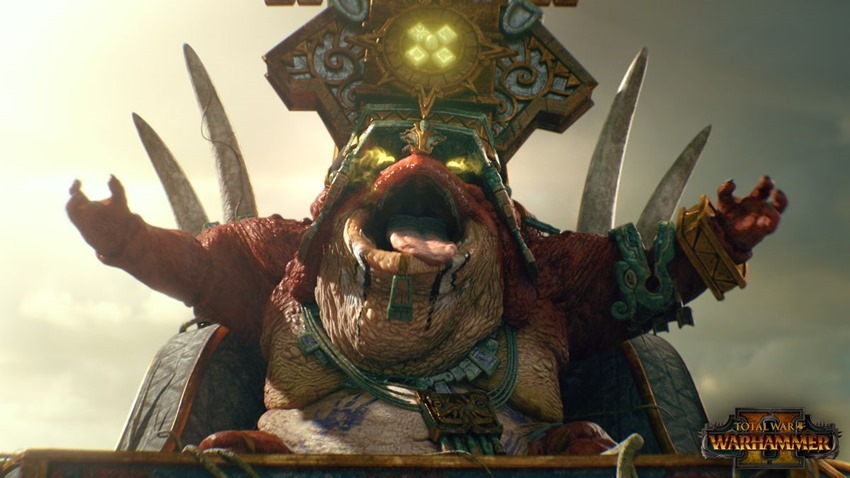 Overall, even if you choose not to immediately engage with the rituals, this approach adds a fresh layer of focus to the campaign. Specific areas of interest allow for expansion with strategic intent beyond simple growth and self-preservation, and sending armies out to perform surgical strikes becomes far more important and prevalent. I found myself forming and relying on alliances far more than I had in the previous game, simply so it became easier to contain opposing forces and establish manageable defensive positions.
Overall, even if you choose not to immediately engage with the rituals, this approach adds a fresh layer of focus to the campaign. Specific areas of interest allow for expansion with strategic intent beyond simple growth and self-preservation, and sending armies out to perform surgical strikes becomes far more important and prevalent. I found myself forming and relying on alliances far more than I had in the previous game, simply so it became easier to contain opposing forces and establish manageable defensive positions.
In addition to the new campaign, the game features four new major factions; the High Elves, the Dark Elves, the Lizardmen, and the Skaven. Each are presented in a way that greatly diversifies them from the other factions, both aesthetically and mechanically, and they all feel notably distinct to play as and play against.
The High Elves have a fairly balanced army roster, albeit with a military advantage in superior ranged fire and maneuverable units that can keep distance between targets. They prefer to act defensively, pouring ranged fire into approaching threats, throwing in precise surgical strikes, and cleaning up what’s left with elite melee units. On the campaign map, High Elves are able to influence the relations of other factions through a unique resource called Influence, either encouraging or dissolving diplomatic ties to their benefit, potentially creating new threats for their enemies, or dissolving potential threats without needing any direct military intervention.
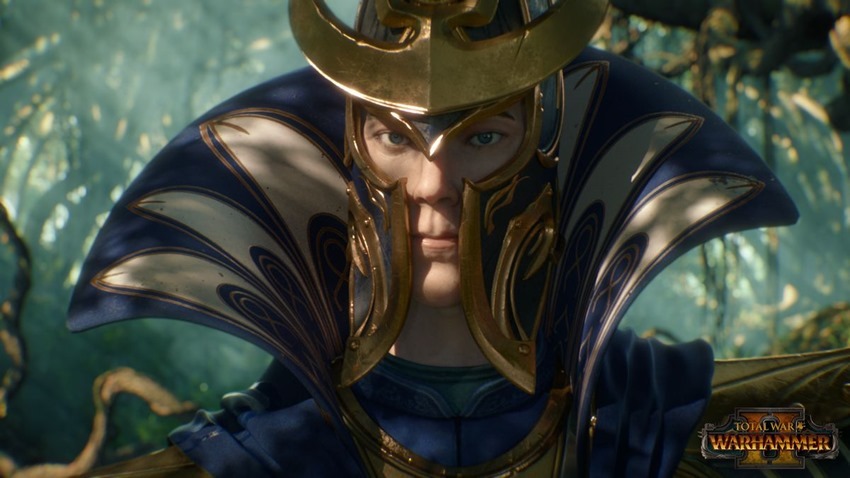
While the High Elves focus on defensive military tactics, the Dark Elves veer strongly into offensive focus. Many of their units are metaphorical glass cannons, pushing into combat to deal as much damage as possible as soon as possible, ideally breaking their enemies before they suffer much damage themselves. This aggression is further encouraged and bolstered by their Murderous Prowess mechanic – once they’ve dealt a certain amount of damage in a battle, the entire army receives a large bonus to all offensive stats for a short while, allowing them to decimate enemy lines. On the campaign map, the Dark Elf economy is uniquely structured around slavery. Whenever they win military engagements, they take slaves which they distribute throughout their empire. The more slaves a city has, the more gold it produces, though a high quantity of slaves results in public order penalties as rebellion grows – so it’s very much a balancing act.
The Lizardmen are brutes, most of their earlier units are both better armored and harder hitting than those of other factions, though they are priced accordingly. With a plethora of larger monstrous creatures at their disposal, the Lizardmen excel in close combat brute force, though conversely they lack a lot of the ranged capability of other factions. Most Lizardmen units can also become enraged and go on rampage when damaged enough, resulting in them continuously chasing and assaulting the nearest enemy until they come out of their frenzied state. While this often result in them staying in combat longer than other units, preferring to fight on when losing rather than fleeing, they don’t respond to commands and can often be stuck either attacking something you’d prefer they’d avoid, or they running off to the corners of the map as they chase fleeing units. On the campaign map, the Lizardmen have access to the Geomantic Web, a mystical binding they use to entrench their influence in the areas they control, empowering the effectiveness of their edicts they issue, growing more powerful as they expand and reinforce the network. While the bonus this provides can be considerable, it does result in them focusing more on defense as well as slower and sturdier territory expansion.
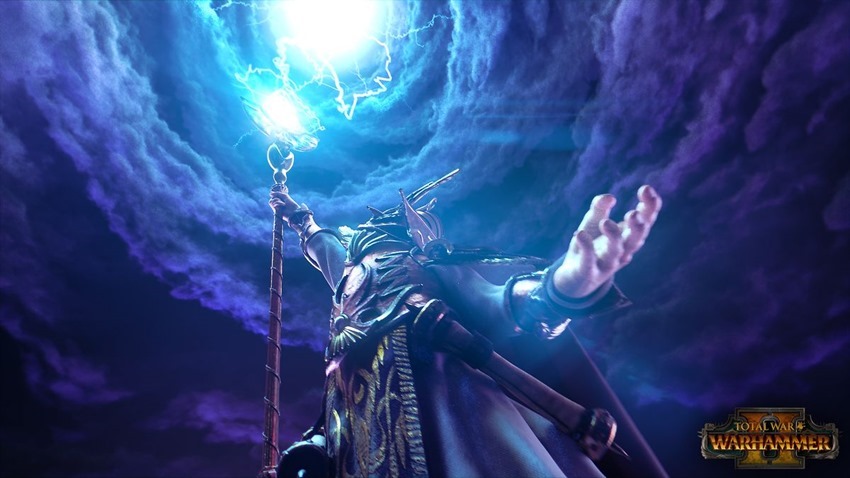
The Skaven are a true horde faction, their armies of ratmen comprising of hundreds, if not thousands of individually weaker soldiers that mob enemy units. Their swarms also work well to erode the morale of enemy units they engage with, particularly those they struggle to take down, by swarming and surrounding targets. To this end, Skaven both have plentiful access to disposable units, as well as a high casualty replenishment rate when out of combat, allowing them to act far more suicidal than other factions would. Their meekness and fragility does result in Skaven’s morale breaking easily, but they also regain morale frighteningly quickly, allowing them to return to combat again and again, continuing to infuriate and harry enemy forces.
On the campaign map, Skaven society is structured around Food. Gained primarily through winning combat, Food fuels their society, though it runs out quickly and low Food levels inflict severe faction wide penalties. Skaven settlements also produce Corruption, though they themselves suffer attrition through it. These two mechanics combined result in Skaven being extremely aggressive as they push to win fights to get more food, and to expand into areas where they’ve not corrupted the area yet.
Finally, Skaven settlements are somewhat hidden on the campaign map, only ever appearing as otherwise unoccupied ruins. While it may be easy to gauge where Skaven colonization is based on a suspicious collection of ruins no one has occupied, as well as Skaven Corruption being a strong hint, the inability to tell if any of those ruins contain an army does result in a cautious approach regardless.
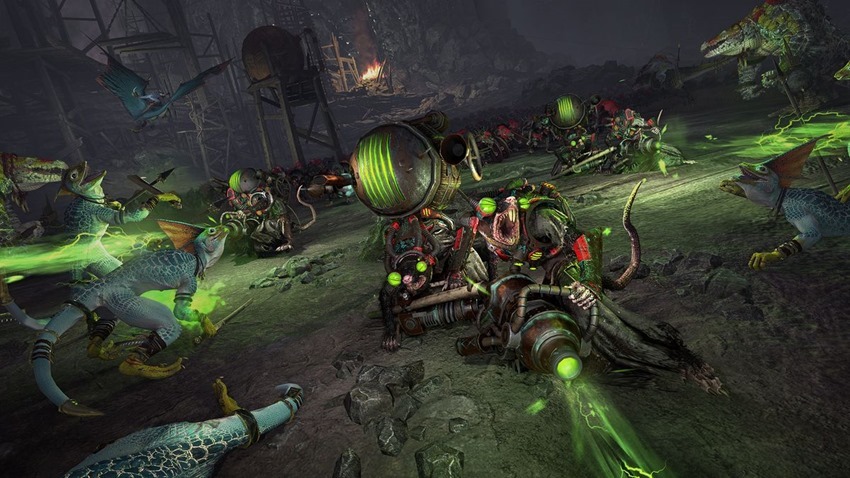
All four of the factions also have four Rites that they can perform. These become available as players accomplish certain goals, and are locked away for a time after using them. Most of these provide faction wide bonuses, while others unlock the ability to purchase specific powerful units that are otherwise unavailable.
Total War: Warhammer 2 also introduces some new tweaks and improvements to the campaign. First and foremost, one can now take and hold any settlement, regardless of its type, whereas the previous game prevented certain factions from ever occupying certain types of settlement locations. There is a large penalty to occupying a settlement that your faction isn’t acclimatized to, inflicting penalties to growth, build times, taxes, as well as a notable increase in unhappy people. This seems an elegant solution, as the penalties still discourage expansion into areas factions would be unlikely to go, but if need be one can still establish a beleaguered outpost.
The campaign map is also now littered with items of interest one can explore, be they sunken wrecks of treasure in the sea or ruins one can explore, risking tragedy for potentially great rewards. This certainly makes the world more interesting, and can at times provide a considerable boost to one’s campaign if one gets lucky.
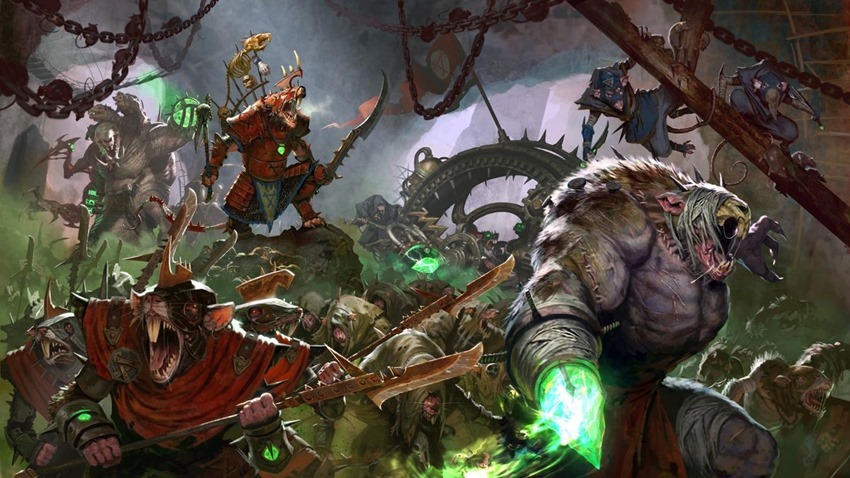
Rogue Armies are another new addition. These are neutral armies that sometimes appear around the map, and if left unchecked will slowly grow into multiple armies. While they aren’t initially antagonistic, they will eventually start taking territory and establishing their own empire if left to their own devises. They also tend to be made up of mixed units from various factions, resulting in some really interesting and quirky combinations that provide unique combat experiences. The AI is also far more willing to be aggressive with smaller armies, and while this may result in them attempting some impossible assaults, it does result in a campaign where one interacts with opposing factions far more than the previous game.
However, there are areas in previous game that felt lacking that have also carried over. Sieges are still as simple as they were in the previous Total War: Warhammer, lacking the complexity and depth they presented in other Total War games. Diplomacy is also often frustratingly simple, which is especially evident in the Vortex campaign where certain territory is vital in aiding a faction’s progression towards the campaign goal. As an example, often areas of interest are held by allies, and without a means to transfer ownership of territory the only way to gain control of these areas is to either absorb the allied faction (which they are often very reluctant to accept), or break alliance and conquer their territory. This is somewhat frustrating as, thematically, there’s not much reason these allies would prevent one from using them.
It’s also important to mention that the load times are extremely painful if one isn’t running the game off an SSD, often taking several minutes to load into and out of battles. When one is managing multiple combats at once, especially now that auto-resolve is more punishing, this can result in a laboriously long turns.
Despite these issues, the areas in which Total War: Warhammer 2 improves on its formula are plentiful, resulting in one best put together Total War games to be released. While the fantastical Warhammer setting won’t appeal to some, particularly a few of those who’ve enjoyed Total War’s previous historical releases and were expecting more, it’s wonderful to see the wonderful world of Warhammer come to love so expertly and vividly. If you’ve played and enjoyed Total War: Warhammer 1, then it’s a near given that you’ll love what’s on offer here.
I should also mention that Creative Assembly will, as their first FLC, shortly be releasing the Mortal Empires campaign for those who own both Total War: Warhammer games, which combines the campaign maps and factions from both games into one gigantic campaign map (albeit with several adjustments to both to make it work). It’s an exciting prospect, as not only will the factions of both games be able to interact, but many of the new mechanics, such as treasures and rogue armies, will now be available to the older factions.
Last Updated: October 16, 2017
| Total War: Warhammer II | |
|
The areas in which Total War: Warhammer 2 improves on its formula are plentiful, resulting in one best put together Total War games to be released. While the fantastical Warhammer setting won’t appeal to some, particularly a few of those who’ve enjoyed Total War’s previous historical releases and were expecting more, it’s wonderful to see the wonderful world of Warhammer come to love so expertly and vividly. If you’ve played and enjoyed Total War: Warhammer 1, then it’s a near given that you’ll love what’s on offer here.
|
|
|---|---|
| Total War: Warhammer II was reviewed on PC | |
|
87 /
100
| |





















Original Heretic
October 16, 2017 at 14:18
It’s games like this that make me wish I had a gaming PC.